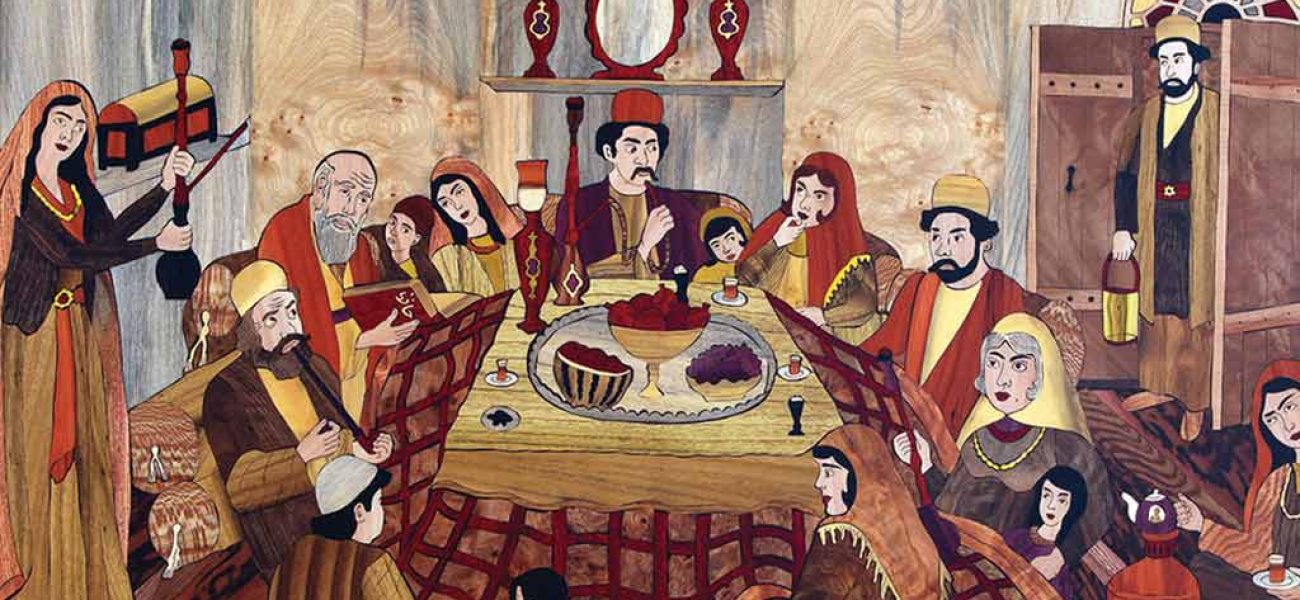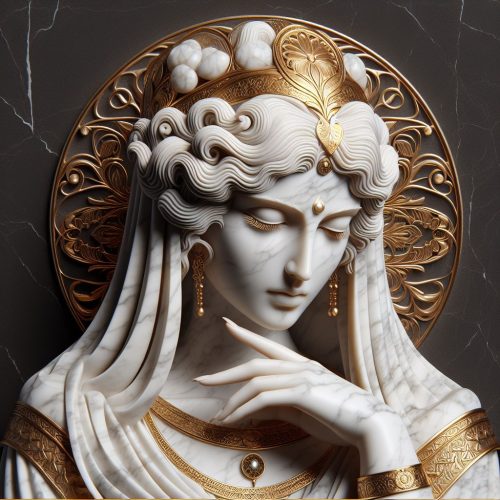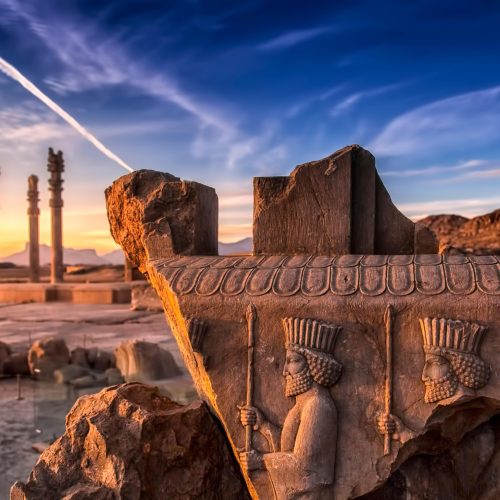By Dr. Reza Farahani, Cultural Historian and Comparative Mythologist Iranian Studies Journal, Winter Edition
Introduction: Bridging Worlds Through Celebration
In the rich tapestry of human cultural expression, few phenomena illuminate the profound interconnectedness of human experience as eloquently as seasonal celebrations. As an Iranian scholar dedicated to unraveling the intricate threads of cultural heritage, I find myself perpetually fascinated by the nuanced dialogues that emerge when we place seemingly disparate traditions in conversation with one another.
This exploration seeks to unveil the remarkable parallels between two magnificent winter celebrations: Yalda Night, the ancient Iranian solstice commemoration, and Christmas, the Christian festival marking the birth of Jesus Christ. While these celebrations might appear distinct at first glance—one rooted in Zoroastrian cosmology, the other in Judeo-Christian theology—a deeper archaeological and anthropological investigation reveals astonishing synchronicities that transcend geographical and religious boundaries.
The Celestial Roots: Understanding Winter Solstice Symbolism
Yalda Night: A Zoroastrian Cosmic Narrative
Yalda, celebrated on the longest night of the year—typically December 21st—represents a profound cosmic drama in Iranian cultural consciousness. The term “Yalda” itself derives from Syriac, meaning “birth,” which immediately invites intriguing comparative considerations. In Zoroastrian cosmology, this night symbolizes the triumph of light over darkness, a metaphysical struggle where the forces of good—represented by brightness and warmth—ultimately prevail against the cold, shadowy forces of winter.
The rituals surrounding Yalda are deeply symbolic. Families gather, consuming pomegranates and watermelons—fruits whose red hues symbolize the life-giving blood of creation. Nuts and dried fruits adorn tables, representing stored sustenance through winter’s harsh terrain. Poetry, particularly the works of Hafez, is recited, transforming the night into a luminous celebration of human resilience and spiritual renewal.
Christmas: A Parallel Cosmic Narrative
Remarkably, Christmas shares fundamental symbolic resonances with Yalda. Occurring proximate to the winter solstice, Christmas too represents a narrative of light emerging from darkness. The birth of Jesus is metaphorically understood as divine light entering a world shrouded in spiritual obscurity. The Christian nativity story, with its imagery of a brilliant star guiding wise men, echoes the Zoroastrian emphasis on celestial illumination.
The parallels extend beyond theological metaphor. Both traditions emphasize familial gathering, communal feasting, and the symbolic consumption of foods representing abundance and spiritual vitality. Where Yalda celebrates with pomegranates, Christmas tables often feature symbolic foods like honey-glazed meats and fruit-laden desserts.
Archaeological and Historical Dialogues
Mesopotamian and Persian Influences
The region of Mesopotamia—spanning modern-day Iran, Iraq, and surrounding territories—serves as a crucial nexus in understanding these cultural intersections. Zoroastrian cosmological concepts significantly influenced early Christian theological developments, particularly during the Parthian and Sassanid periods when intellectual and cultural exchanges were robust.
The concept of a divine savior born during the darkest night, destined to bring light and transformation, finds resonance in both Mithraic traditions—prevalent in ancient Persia—and early Christian narratives. Mithraism, a mystery religion with strong Persian roots, celebrated the birth of its divine figure on December 25th, predating Christian celebrations by centuries.
Astronomical Alignments
Both Yalda and Christmas are fundamentally astronomical celebrations, synchronized with solar cycles. The winter solstice represents a liminal moment—the point where the sun appears to stand still before gradually returning to longer days. This astronomical phenomenon was interpreted across cultures as a moment of miraculous transformation, a metaphysical rebirth.
In Zoroastrian philosophy, this moment represented Ahura Mazda’s perpetual victory over darkness, while in Christian theology, it symbolizes Christ’s emergence as the “light of the world.” These are not mere coincidental metaphors but profound philosophical interpretations of cosmic rhythms.
Symbolic Convergences
Light as Metaphysical Narrative
Light emerges as the most compelling symbolic intersection between Yalda and Christmas. In both traditions, light is not merely a physical phenomenon but a profound metaphysical concept representing hope, renewal, and transcendence. Yalda’s candle-lighting ceremonies and Christmas’s luminous traditions—from Advent candles to twinkling decorations—represent more than aesthetic choices; they are ritualistic affirmations of human spiritual resilience.
Familial and Communal Bonds
Another striking parallel lies in the emphasis on familial and communal gathering. Both celebrations transcend individual experiences, transforming personal rituals into collective narratives of shared hope and renewal. The Iranian tradition of Yalda and the Christian practice of Christmas Eve both prioritize intimate familial connections, suggesting a universal human need for connection during nature’s most challenging season.
Theological and Philosophical Nuances
Cyclical Understanding of Existence
At their philosophical core, Yalda and Christmas represent cyclical understandings of existence. They are not merely commemorative events but dynamic reaffirmations of cosmic order. The transition from darkness to light mirrors psychological and spiritual transformations, suggesting that these celebrations are profound meditations on human potential for renewal.
In Zoroastrian philosophy, this cycle represents the ongoing battle between Spenta Mainyu (progressive, creative force) and Angra Mainyu (destructive, regressive force). Similarly, Christian theology frames this as a continuous struggle between divine love and human fallibility, with Christ’s birth symbolizing redemptive intervention.
Contemporary Relevance
Cultural Preservation and Dialogue
In an increasingly fragmented global landscape, celebrations like Yalda and Christmas remind us of our shared human experience. They demonstrate that beneath surface-level differences, profound universal narratives of hope, renewal, and collective resilience persist.
For Iranian scholars and cultural practitioners, understanding these connections is not an academic exercise but a vital act of cultural diplomacy. By illuminating these shared narratives, we challenge reductive, conflict-oriented perspectives and instead showcase the rich, interconnected nature of human cultural expression.
A Tapestry of Shared Humanity
The comparative exploration of Yalda and Christmas reveals more than historical coincidences. It unveils a profound narrative of human spiritual aspiration—a testament to our collective capacity to find meaning, hope, and connection even in the darkest of times.
As we continue to unravel these complex cultural dialogues, we are reminded that traditions are not static monuments but living, breathing conversations across time and space. Yalda and Christmas stand not as isolated cultural artifacts but as luminous threads in the grand, intricate tapestry of human spiritual experience.
Dr. Reza Farahani is a senior researcher in comparative cultural studies at the Tehran Institute of Historical and Anthropological Research.




